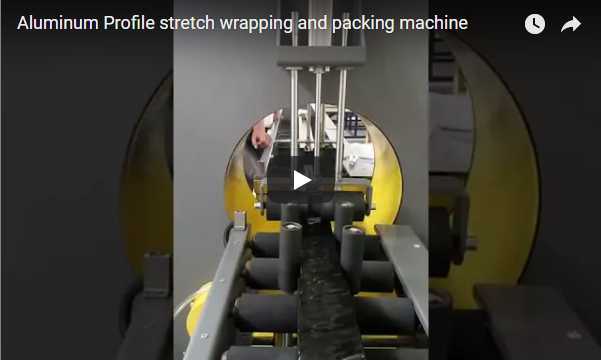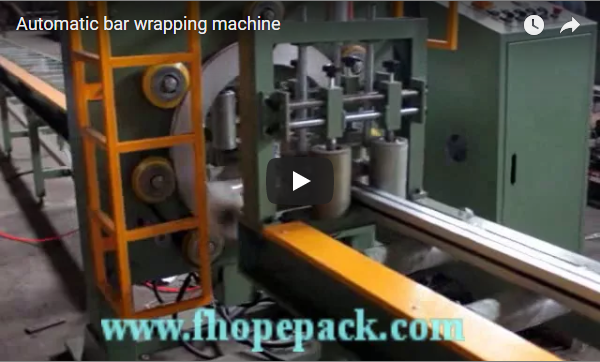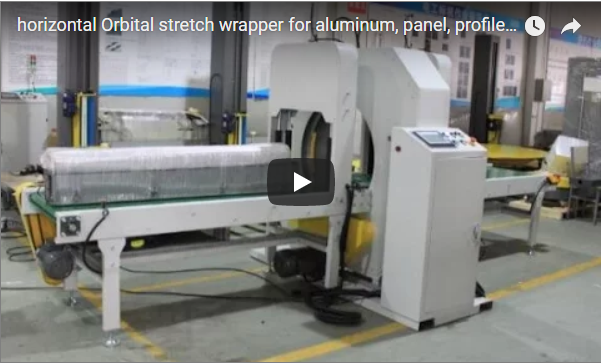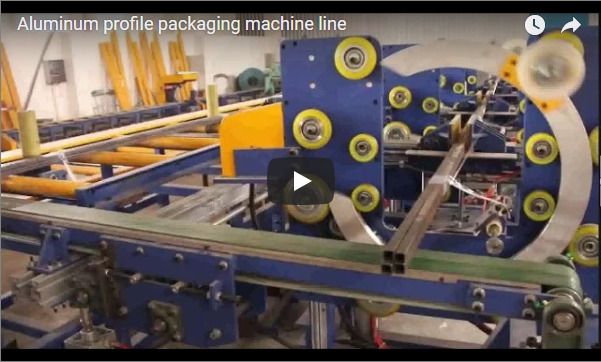Streamlining Protection: A Closer Look at the Aluminum Orbital Stretch Wrapper
Handling long, often delicate aluminum extrusions presents unique challenges in fabrication and manufacturing environments. Ensuring these profiles reach their destination – whether the next stage of production or the end customer – free from scratches, dents, and environmental damage is paramount. Manual wrapping methods are often time-consuming, labor-intensive, and inconsistent. This is where the aluminum orbital stretch wrapper emerges as a critical asset, automating and optimizing the protective packaging process.
This machine type is specifically engineered to address the unique characteristics of aluminum profiles, which can range from simple L-shapes to complex, multi-hollow extrusions used in window frames, architectural elements, automotive components, and more.
1. The Challenge: Protecting Vulnerable Aluminum Profiles
Aluminum's relatively soft surface makes it susceptible to damage during handling, storage, and transit. Key concerns include:
- Surface Scratches and Abrasions: Contact with other materials, improper handling, or debris can easily mar the finish.
- Impact Damage: Dents and bends can compromise both the aesthetic and structural integrity of the profile.
- Environmental Factors: Oxidation, dust, and moisture can affect the surface quality over time.
- Inefficiency: Manual wrapping of long, potentially heavy profiles is slow, requires significant manpower, and often results in inconsistent protection and wasted material.
2. The Solution: How Orbital Wrapping Works
An orbital stretch wrapper encircles the aluminum profile as it passes through the machine horizontally. Here’s a breakdown of the typical process:
- Infeed: Profiles are placed onto an automated infeed conveyor system, often equipped with non-marring rollers (like PU-coated ones) to protect the aluminum surface.
- Wrapping Ring: The core of the machine is a rotating ring holding one or more spools of packaging material (typically stretch film). As the profile moves through the center of the ring, the ring spins, dispensing and applying the film around the profile's entire circumference.
- Synchronous Wrapping: A key feature highlighted in the original post, synchronous wrapping allows the machine to simultaneously apply multiple layers or types of material. For example, a layer of protective paper or VCI film can be applied concurrently with the stretch film, providing both cushioning/corrosion inhibition and secure bundling in a single pass. This significantly boosts efficiency and protection levels.
- Outfeed: Once wrapped, the profile moves onto an outfeed conveyor, ready for the next stage. Advanced systems can include automatic cutting and clamping of the film.
3. Key Features and Technical Considerations
When evaluating an aluminum orbital stretch wrapper, several technical aspects are crucial:
- Ring Diameter and Speed: Must accommodate the largest profile cross-section. Variable ring speed (RPM) allows adjustment for different profile types and desired wrap tension/overlap.
- Conveyor System: Needs to be robust enough for the weight and length of the profiles. Variable speed conveyors, synchronized with the ring speed, ensure a consistent wrap pattern. Roller material (e.g., PVC, PU-coated steel) is critical to prevent profile damage.
- Wrapping Material Compatibility:
- Stretch Film: Standard LLDPE stretch film is common for bundling and basic protection. Pre-stretch capabilities (often 150-300%) significantly reduce film consumption.
- Protective Films/Papers: VCI (Volatile Corrosion Inhibitor) paper/film, kraft paper, foam, or bubble wrap can be applied simultaneously using the synchronous wrapping function for enhanced surface protection.
- Material Carriage: Tension control systems are vital for applying the right amount of force without damaging delicate profiles.
- Control System: Typically PLC-based with an HMI (Human-Machine Interface) touchscreen for setting parameters like ring speed, conveyor speed, wrapping programs (recipes), overlap percentage, and film tension.
- Cutting and Clamping: Automated systems improve cycle time and consistency compared to manual cutting.
- Safety Features: Light curtains, safety interlocks on access doors, and emergency stop buttons are essential for operator safety.
4. Tangible Benefits for Fabricators
Investing in an aluminum orbital stretch wrapper offers significant advantages:
- Superior Profile Protection: Consistent, tight wrapping shields surfaces from scratches, dust, and moisture, drastically reducing damage claims and rework costs.
- Increased Throughput: Automating the wrapping process significantly speeds up packaging compared to manual methods, alleviating bottlenecks.
- Reduced Labor Costs: Frees up personnel previously engaged in tedious manual wrapping for more value-added tasks.
- Optimized Material Usage: Precise control over film stretch and overlap minimizes material waste compared to inconsistent hand wrapping.
- Enhanced Professionalism: Uniformly wrapped products present a more professional image to customers.
5. Operational Insights: Getting the Most from Your Machine
From experience on the shop floor, successful implementation involves more than just the machine itself:
- Integration: Consider how the wrapper fits into your existing workflow. Proper infeed and outfeed handling are crucial.
- Material Selection: Choose the right type and gauge of stretch film and any secondary protective materials based on the profile's finish, weight, and shipping conditions. Don't skimp on quality film – it impacts performance and protection.
- Maintenance: Regular checks on rollers, belts, film carriage, and cutting mechanisms are vital for consistent performance and longevity. Keep the wrapping ring area clean.
- Operator Training: Ensure operators understand how to safely operate the machine, load materials correctly, select appropriate programs, and troubleshoot minor issues.
See the Aluminum Orbital Stretch Wrapper in Action:
This video demonstrates the basic operation and the synchronous wrapping capability, applying multiple materials in one pass.
6. Choosing the Right Orbital Wrapper
Selecting the appropriate machine requires careful consideration of:
- Profile Dimensions: What are the minimum and maximum length, width, and height of the profiles you need to wrap? This dictates the required ring size and conveyor setup.
- Throughput Requirements: How many profiles or bundles need to be wrapped per hour or shift? This influences the necessary ring speed and level of automation.
- Protection Level: Do you need basic bundling, high-level surface protection, or corrosion inhibition? This determines the need for synchronous wrapping capabilities and compatible materials.
- Level of Automation: Do you require fully automated infeed/outfeed, cutting, and clamping, or is a semi-automatic machine sufficient?
- Budget: Consider the total cost of ownership, including the machine price, installation, consumables (film, paper), maintenance, and potential labor savings.
Conclusion: A Strategic Investment in Quality and Efficiency
The aluminum orbital stretch wrapper is far more than just a packaging machine; it's a strategic tool for fabricators handling aluminum extrusions. By providing consistent, high-level protection while significantly boosting operational efficiency and reducing labor and material costs, it directly contributes to product quality, customer satisfaction, and the bottom line. For any operation dealing with significant volumes of aluminum profiles, evaluating the integration of an orbital stretch wrapper is a worthwhile endeavor to protect valuable products and streamline the path from production to end-use.





